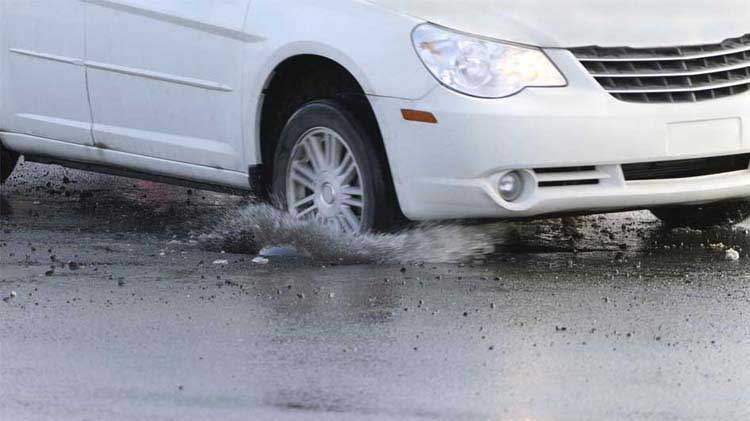This post was originally published on www.statefarm.com
Winter brings a number of driving hazards, but one tends to rear its ugly head after the snow is melted and signs of spring return — the dreaded pothole. A close encounter with a crater can lead to wrecked tires, wheels and suspension components.
What causes potholes?
Potholes, chuckholes, chasms or whatever you call them in your region can occur in any climate. But they’re especially prominent the first few months of the year in areas known for ice, snow and below-freezing temperatures. The freezing and thawing cycles allow moisture to seep into the road surface, which causes the road to crumble.
How can you protect against potholes?
- Try to take roads you know well. Your familiarity will help you avoid potholes.
- When driving at night, travel on well-lit roads so you can see the surface.
- Slow down. Give yourself a chance to see the pothole and avoid it before you’re in it.
- If you hit a pothole, carefully inspect your tires and wheels for possible damage. Note how your car handles afterwards. If it “pulls” one way or the other or the steering feels wobbly, you may want to have your car checked by a professional.
- If you can’t avoid a pothole, do your braking before impact. There’s less damage when a tire is rolling rather than skidding over a hole during braking.
- If you notice a road that has potholes, you can report the roadway hazard to your local government’s transportation department so they are aware of the issue.
Potholes and motorcycles
Potholes can create even larger issues for motorcyclists. The National Highway Traffic Safety Administration recommends riders go around such hazards, and to do so safely, you must be able to spot a pothole from a distance. Slow down before reaching the obstacle, and make sure you have enough room before changing direction.
Does car insurance cover pothole damage?
If you run over a pothole and your car sustains damage, beyond damage limited to a tire, you may be covered by collision coverage on your auto policy. However, deductibles may also apply. It might be a good idea to talk to your insurance company to be informed of the coverage and applicable deductibles before you decide to file a claim for pothole damage.
In some cases, some jurisdictions like Chicago and New York state may pay for damage caused by a pothole if a claim is filed. You can find out the jurisdiction responsible for the road where the damage occurred, contact them and learn if they might consider covering for damages. They may need photos of the damage and the pothole and an estimate or two for the claim.
[ad_1]
